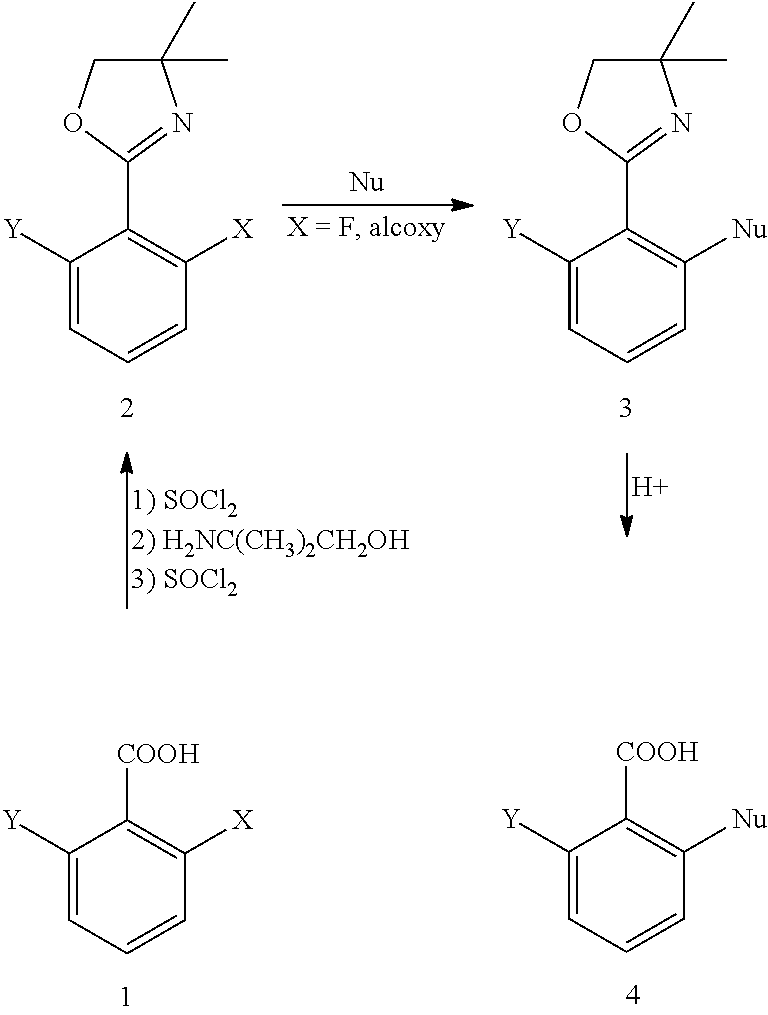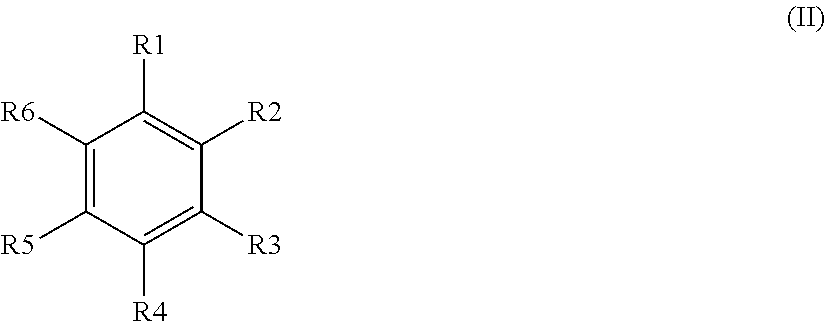Method for preparing chemical compounds of interest by nucleophilic aromatic substitution of aromatic carboxylic acid derivatives supporting at least one electro-attractive group
a technology of aromatic carboxylic acid and derivatives, applied in the field of chemical synthesis, can solve the problems of nucleophilic substitution, time and money-consuming, and removal processes are necessary to find,
- Summary
- Abstract
- Description
- Claims
- Application Information
AI Technical Summary
Benefits of technology
Problems solved by technology
Method used
Image
Examples
Embodiment Construction
[0088]All of the reactions are performed under inert atmosphere with anhydrous solvents (Gordon, J. A.; Ford, R. A. The Chemist's Companion, Wiley J. and Sons, New York, 1972). The THF is distilled by means of an anhydrous THF GTS100 station (Glass Technology). Alkyllithium derivatives are periodically titrated with N-benzylbenzamide (Burchat, A. F.; Chong, J. M.; Nielsen, N. J. Organomet. Chem. 1997, 542, 281).
[0089]S-butyllithium (1.4 M in solution in cyclohexane), n-butyllithium (1.6 M in solution in hexane), t-butyllithium (1.7 M in solution in pentane) and phenyllithium (1.8 M in solution in dibutylether) are sold by Acros Chemicals and Aldrich Chemical Company.
[0090]Ethylmagnesium bromide (3 M in solution in diethylether) and vinylmagnesium bromide (1M in solution in THF) are sold by Acros Chemicals and Aldrich Chemical Company.
[0091]The amines are distilled over CaH2 and stored under argon atmosphere.
[0092]The nuclear magnetic resonance spectra of the proton 1H (400 MHz or 20...
PUM
| Property | Measurement | Unit |
|---|---|---|
| temperature | aaaaa | aaaaa |
| width | aaaaa | aaaaa |
| optically active | aaaaa | aaaaa |
Abstract
Description
Claims
Application Information
 Login to View More
Login to View More - R&D
- Intellectual Property
- Life Sciences
- Materials
- Tech Scout
- Unparalleled Data Quality
- Higher Quality Content
- 60% Fewer Hallucinations
Browse by: Latest US Patents, China's latest patents, Technical Efficacy Thesaurus, Application Domain, Technology Topic, Popular Technical Reports.
© 2025 PatSnap. All rights reserved.Legal|Privacy policy|Modern Slavery Act Transparency Statement|Sitemap|About US| Contact US: help@patsnap.com



